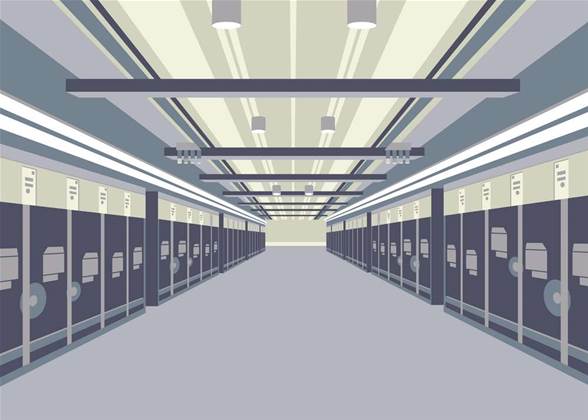ISP Adam Internet plans to build out a second stage of its new $6 million data centre in six months following strong demand for the 200 racks of space available in the first stage.

The Adelaide-based service provider said yesterday that the data centre, located outside of the central business district at Mile End, would be ready for customer equipment in October.
Stage one of the project has 200 racks segmented into four areas. Half have been allocated for low-density environments up to 3kW per rack and the other half to more dense requirements up to 8kW.
Adam Internet managing director Scott Hicks said the ISP requires around 20 racks of space to house its disaster recovery kit, which is currently housed in leased space streets away from the ISP's offices and main centre.
Hicks said the proximity of the existing disaster recovery facility from the main centre had been identified as a risk.
After a fruitless search for 100 square metres of alternate space, Hicks decided to construct a disaster recovery site on the edge of the city - with some extra space that could be sold to clients.
The first stage of construction will result in 180 racks of space for sale, of which a third has been sold.
Pent-up demand in Adelaide for quality space would lead to a fast-track of stage two of the centre, adding 150 racks of space for sale, Hicks said.
"We set up the data centre in a modular fashion because we weren't quite sure what the Adelaide market was ready for," he said.
"Once we got rid of the pent-up demand, would there still be customers that want the space? We've already sold just shy of a third of the allocations in stage one, which means stage two will happen a lot sooner. We expect to start fitout [on stage two] in six months."
Hicks said most of Adam's kit would be housed in the low-density areas of the centre, which is also the area of most interest to customers.
"We're certainly future-proofing the centre [by having floor space capable of [housing 8kW racks] but we're not sure what type of market there is for it yet," he said.
Although the centre is housed in an existing single-storey building, it has been gutted and refitted from scratch, including a new slab.
It has four layers of security, including key, PIN and biometric hand scanning.
The data hall is on a 600mm raised floor with power cabling underneath.
Most of the plant, including the two gensets running in an N+1 configuration (with capacity for up to four) and the 450kW Eaton Powerware uninterruptible power supply units is being deployed in a modular fashion.
The rows will run in a hot/cold aisle configuration with a mix of chilled water cooling systems and airside economisers used to cool the equipment.
Airside economisers are used to enable ‘free cooling', allowing Adam Internet to switch the centre to treated outside air when it becomes cooler than the ambient temperature in the data centre.
But the ISP hadn't gone overboard with green technology.
"We've made the centre as clean as we could justify," Hicks said.
"A lot of this green stuff is leading edge and there's not too many facilities that haven't spent 50 times the money to get this stuff working well enough for us to consider going down that path."
Hicks said the centre did have capability to perform power measurement down to the node level to enable customers to view the power drawn by each piece of equipment.
Customers could also monitor temperature at the top and bottom of racks - information that could assist them maximise the efficiency of their machines.
Space in the centre is sold in terms of physical rack space and power draw.
Hicks said the centre has also been fitted with a membrane that "turned it into a reverse bathtub", enabling it to operate in up to 600mm of water in case of disasters such as a burst main or hydrant leak.
The facility also has space for a 70-seat call centre for disaster recovery purposes, and 30 more seats are planned for stage two.
This would be used by Adam Internet in a disaster and would also be sold to other clients.
When completed, the new centre will run in an active-active configuration with Adam's main data centre located at headquarters.
Hicks also said the centre would be carrier-neutral. He believed Nextgen Networks and Optus would be the first carriers with a point of presence (POP), ready for launch in October.
The ISP was also in discussions with Pipe Networks, Telstra and Amcom.
"I guess it's up to them," Hicks said. "We'll let anyone in the door that would like to provide a service to customers."



.png&h=140&w=231&c=1&s=0)
_(20).jpg&h=140&w=231&c=1&s=0)




_(26).jpg&w=100&c=1&s=0)

 iTnews Executive Retreat - Security Leaders Edition
iTnews Executive Retreat - Security Leaders Edition












_(1).jpg&h=140&w=231&c=1&s=0)



